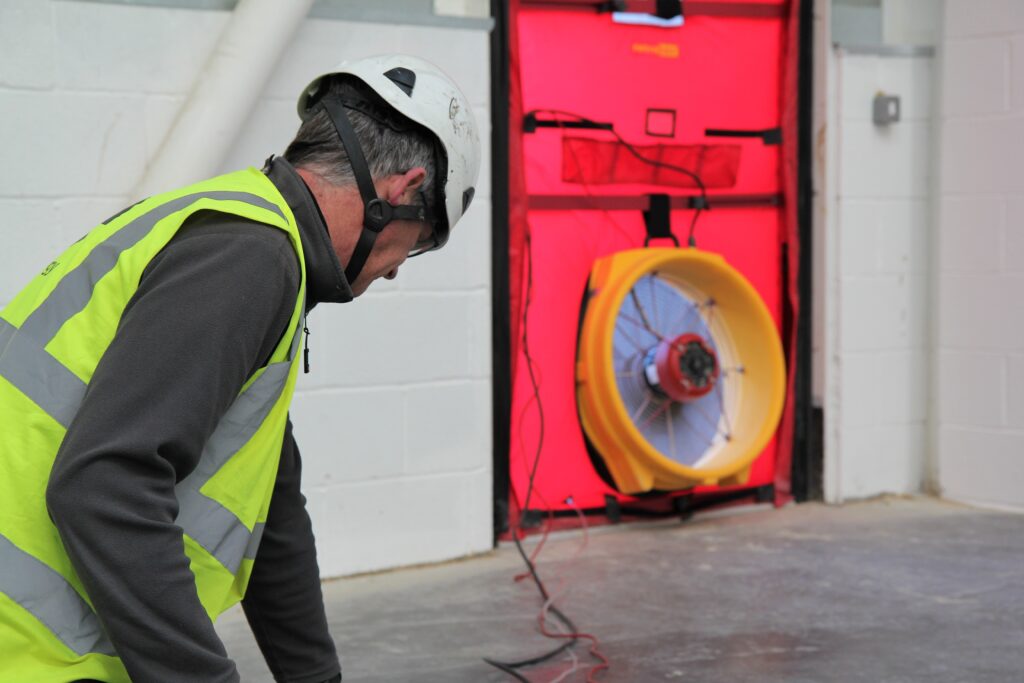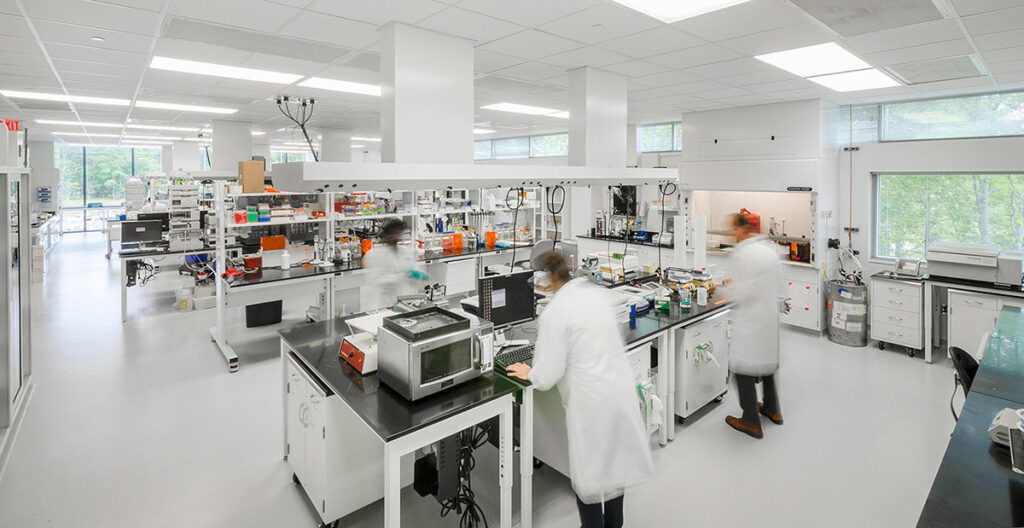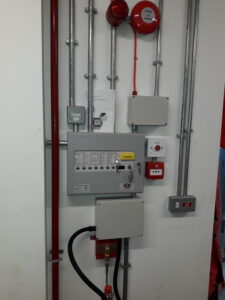Room integrity testing plays a crucial role in ensuring the safety and effectiveness of controlled environments such as server rooms, data centres, and pharmaceutical cleanrooms.
In this guide, we’ll explain what room integrity testing involves, why it’s essential, and how you can ensure your spaces meet the required standards in the UK.
What is Room Integrity Testing?
Room integrity testing, also known as airtightness testing, evaluates a room’s ability to maintain its airtight seal. This process is critical in environments where controlled conditions are necessary to prevent contamination, enable effective fire suppression, or maintain specific air quality standards.
Why is Room Integrity Testing Important?
Testing is vital for several reasons:
- Compliance with UK Regulations: Adhering to strict regulations is mandatory, especially for businesses in sectors like healthcare, IT, and manufacturing. Without proper testing, companies risk falling out of compliance, which can lead to penalties or operational disruptions.
- Fire Safety: In spaces equipped with gaseous fire suppression systems, testing ensures that gases remain within the area long enough to effectively extinguish fires.
- Energy Efficiency: By ensuring proper air sealing, room integrity testing reduces energy consumption. It prevents air leaks that can lead to higher heating or cooling costs.
- Contamination Control: Testing plays a crucial role in cleanrooms and laboratories, where preventing air leakage is essential for maintaining sterility and avoiding contamination.
How is Room Integrity Testing Conducted?
The process involves several steps:
1. Preparation and Sealing
Before beginning the test, you must seal all ventilation systems, windows, doors, and other potential leak points. This preparation ensures that the test results accurately reflect the room’s integrity.
2. Pressurisation and Depressurisation
Next, the room undergoes both positive and negative pressure testing using specialised equipment. This step identifies any leaks or weaknesses in the room’s structure.
3. Measuring Air Leakage
Advanced sensors measure the rate at which air escapes from the room. Analysts then examine this data to determine whether the room meets the required standards for airtightness.
Common Applications of Room Integrity Testing
Room integrity testing plays a critical role in maintaining the safety, efficiency, and compliance of various controlled environments. Below are some of the most common applications where this type of testing is essential:
Data Centres
Data centres are the backbone of modern IT infrastructure, housing servers and networking equipment that support critical business operations. Ensuring the room’s airtightness in these facilities is crucial for several reasons:
- Temperature Control: Proper room integrity helps maintain a stable internal temperature, preventing overheating of sensitive equipment. Even minor air leaks can disrupt the delicate balance needed to keep servers running efficiently.
- Humidity Regulation: In a data centre, maintaining optimal humidity levels is essential to prevent static electricity and moisture buildup, which can damage electronic components. Testing ensures that the environment remains sealed, reducing the risk of fluctuations in humidity levels.
- Fire Suppression Effectiveness: Data centres often use gaseous fire suppression systems, which require a sealed environment to function effectively. Testing ensures that the fire suppression gases remain within the room long enough to extinguish any potential fires.
Cleanrooms
Cleanrooms are controlled environments used in industries such as pharmaceuticals, biotechnology, and electronics manufacturing, where maintaining a contaminant-free space is vital. Testing is essential for cleanrooms because:
- Particulate Control: Cleanrooms must meet stringent air quality standards, which include controlling the number of airborne particles. Any air leaks can introduce contaminants, jeopardising the integrity of the cleanroom. Testing ensures that the room’s seals are intact, preventing contamination.
- Compliance with Regulations: Cleanrooms are subject to rigorous standards, such as ISO 14644, which dictate the allowable particle levels and air cleanliness. Room integrity testing is a key component in ensuring compliance with these standards.
- Product Quality: In industries like pharmaceuticals, even the slightest contamination can affect product quality and safety. Testing helps safeguard against this by ensuring that the cleanroom environment remains uncontaminated.
Laboratories
Laboratories, particularly those dealing with hazardous materials, biological agents, or chemicals, require strict environmental controls to ensure safety and compliance. Testing is crucial in these settings for several reasons:
- Containment of Hazardous Substances: Laboratories often work with substances that are harmful if released into the environment. Room integrity testing ensures that the containment systems are effective, preventing any leaks that could lead to contamination or exposure.
- Protecting Personnel: In laboratories, the safety of personnel is paramount. By ensuring that the room is properly sealed, room integrity testing helps protect workers from exposure to harmful substances, reducing the risk of accidents or health hazards.
- Maintaining Experimental Integrity: Many laboratory experiments require controlled environmental conditions. Any breach in room integrity could compromise the results of experiments, leading to inaccurate data or the need to repeat costly and time-consuming processes.
Server Rooms
Server rooms, similar to data centres but on a smaller scale, are critical for the operation of IT infrastructure within businesses. Maintaining the integrity of server rooms is essential for several key reasons:
- Environmental Protection: Server rooms house valuable and sensitive IT equipment that can be easily damaged by fluctuations in temperature, humidity, or dust ingress. Testing ensures that the environment remains stable, protecting the equipment from environmental threats.
- Fire Suppression Efficiency: Like data centres, server rooms often use gaseous fire suppression systems. A properly sealed environment is necessary for these systems to work effectively. Testing confirms that the room is adequately sealed to contain the fire suppression agents.
- Preventing Downtime: Any environmental issues in a server room can lead to equipment failure, resulting in costly downtime for a business. By conducting regular testing, companies can ensure that their server rooms are safeguarded against potential disruptions.
UK Standards and Compliance
In the UK, testing must comply with several standards:
- BS EN 15004-1: This standard covers the design, installation, and maintenance of gaseous fire suppression systems, which includes the requirement for testing.
- ISO 14644: For cleanrooms and controlled environments, ISO 14644 outlines the standards for air cleanliness, which testing helps to uphold.
- Building Regulations Part L: This regulation pertains to the conservation of fuel and power, where airtightness testing is a crucial component.
Choosing a Service Provider in the UK
When selecting a testing provider in the UK, consider the following:
1. Accreditation and Certification
Ensure the company complies with relevant standards such as BS EN 15004-1 and ISO 14644.
2. Experience and Expertise
Choose a provider with extensive experience in your industry. They should be knowledgeable about the specific requirements for your type of controlled environment.
3. Comprehensive Reporting
The testing service should provide detailed reports, including data on air leakage rates, compliance with standards, and recommendations for improvements.
Room Integrity Testing: FAQs

How Often Should Testing Be Conducted?
It is recommended to conduct room integrity testing annually or whenever significant changes are made to the room’s structure or HVAC systems.
What Are the Costs Associated with Room Integrity Testing?
Costs vary depending on the size of the room and the complexity of the environment. However, investing in regular testing can save money by preventing costly repairs and ensuring compliance with regulations.
Can Testing Be Performed in Occupied Spaces?
Yes, testing can be performed in occupied spaces, though it may require some temporary adjustments to normal operations to ensure accurate results.
Conclusion: The Importance of Regular Room Integrity Testing
Regular room integrity testing is essential for maintaining the safety, compliance, and efficiency of controlled environments. By adhering to UK standards and working with accredited professionals, you can ensure that your spaces remain secure and meet all necessary regulations.
For more information see:
- Fire Suppression System Room Integrity Testing
- Our recent project at the London Institute of Medical Sciences
- Our wider set of airtightness services
Partner with Build Energy for Your Project
We have vast experience in the testing of controlled environments and can help you deliver successful outcomes in your scheme. Contact us today at on 0330 055 34 05 or email us at be@buildenergy.co.uk. Our expert consultants are here to help.
